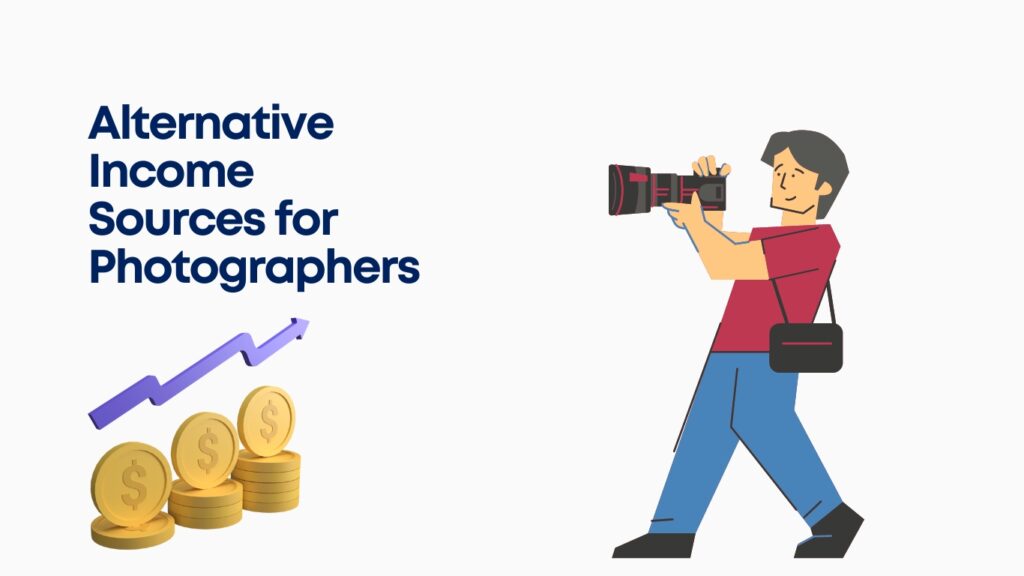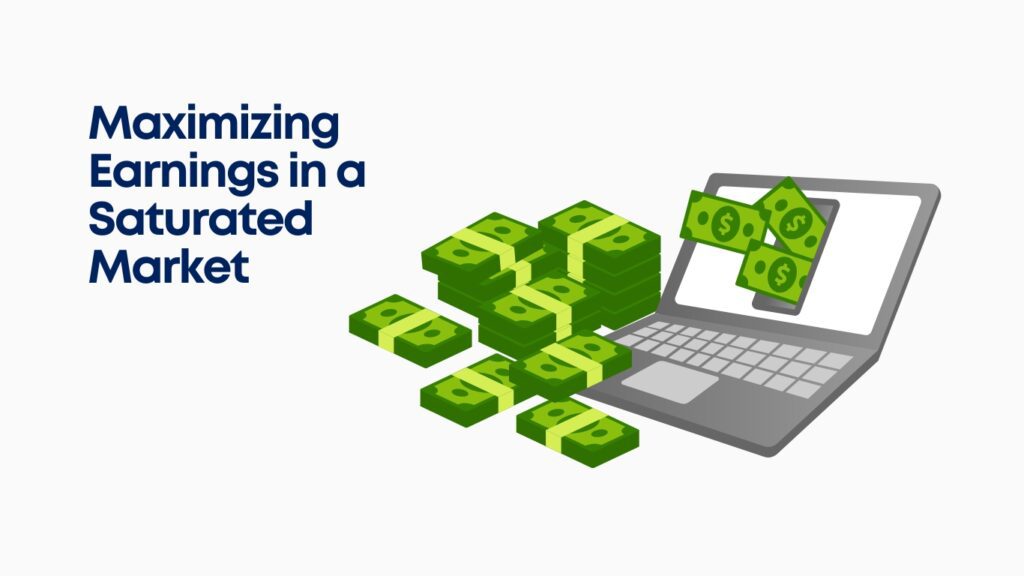Stock photography was once a goldmine with photographers able to license images for up to $1000 per use and secure substantial income. As a photographer and small agency owner, I personally earned $1.8 million over three decades.
But the industry has shifted. With digital photography making it easy for anyone to snap and upload photos and with the rise of microstock agencies offering images for pennies the market has become oversaturated.

Images now often sell for under $10 with all rights included making it difficult to sustain high earnings. This guide will delve into modern stock photography alternative income avenues and the best platforms for selling your photos today.
1. Understanding the Evolving Landscape of Stock Photography

1.1 The Rise of Microstock Agencies
The growth of platforms like Shutterstock Adobe Stock and iStock has made stock photos widely available. Anyone can upload and sell making high-quality images accessible but also flooding the market.
Microstock agencies typically sell images royalty-free meaning buyers pay a one-time fee for unlimited use which drastically reduces the per-image value for photographers.
1.2 The Challenge of High Competition
With millions of new images uploaded daily, it’s harder for photographers to stand out. The abundance of similar photos means that photographers often have to accept lower prices to attract buyers.
High competition has led to declining returns. While monthly earnings from stock photography could reach over $5000 in the past many photographers now see less than $100 per month.
1.3 Declining Revenue and the Search for Alternatives
The shift in the industry means that stock photography alone is rarely sufficient for a sustainable income. Many photographers are turning to alternative ways to monetize their skills such as blogging print sales or offering photography workshops.
2. Top Platforms for Selling Stock Photos
Here is a list of platforms where photographers can sell their work including both major stock photo websites and niche platforms

2.1 Shutterstock
Overview One of the largest and most popular stock photo platforms known for its user-friendly interface and extensive customer base.
Earnings Tiered commission structure ranging from 15% to 40% with the percentage increasing as more content is licensed.
Pros High visibility and vast reach leading to more potential sales.
Cons Low presale earnings due to the competitive nature of the market.
2.2 Adobe Stock
Overview Integrates seamlessly with Adobe Creative Cloud making it a popular choice among designers and creative professionals.
Earnings Pay a 33% commission on photos sold.
Pros Access to Adobe’s large customer base and creative professionals.
Cons High competition and similar payout challenges as other microstock platforms.
2.3 Alamy
Overview Known for its diverse range of stock images including high-resolution photo vectors and videos.
Earnings Offers a commission range of 17% to 50% with no exclusive contracts.
Pros Higher commission rates compared to many microstock platforms.
Cons Less traffic compared to Shutterstock or Adobe Stock which can mean fewer sales.
2.4 iStock (by Getty Images)
Overview A popular microstock platform owned by Getty Images known for its large client base.
Earnings Commission rates can be as low as 15% for nonexclusive contributors but they increase if you go exclusive.
Pros Strong brand recognition and a diverse range of buyers.
Cons Low commission for nonexclusive contributors which can impact earnings.
2.5 500px Marketplace
Overview A community-focused platform that allows photographers to sell licenses for their images.
Earnings Pay a 60% commission on exclusive photos and 30% for nonexclusive images.
Pros High commission rates and a focus on high-quality photography.
Cons Less mainstream than some of the larger stock photo sites which can mean fewer sales.
2.6 Eye Em
Overview A community-driven platform that connects photographers with brands and media companies looking for authentic images.
Earnings Typically splits revenue 50/50 with contributors.
Pros Strong focus on authentic artistic photography that appeals to creative clients.
Cons A smaller market compared to giants like Shutterstock.
2.7 Dreamstime
Overview An established stock photo platform with millions of contributors and a variety of media types.
Earnings Pay 25% to 60% commission depending on the contributor’s exclusivity and activity.
Pros A diverse marketplace and an active community.
Cons Similar challenges with market saturation and lower per-image prices.
2.8 Pond5
Overview Specializes in stock videos but also allows selling photo vectors and audio clips.
Earnings Offers up to 60% commission on sales.
Pros Ideal for photographers who also create video content.
Cons Focus on video means photography sales may be lower.
3. Niche Platforms and Alternatives for Selling Photos
While the major stock photo sites can provide a large audience niche platforms offer photographers opportunities to reach specific markets or communities.

3.1 SmugMug & Zen folio
Overview Both are platforms designed for professional photographers allowing you to create online galleries and sell prints directly.
Earnings You set your prices giving you control over earnings.
Pros Great for selling high-quality prints and offering a personalized experience.
Cons Requires more effort in marketing and driving traffic to your galleries.
3.2 Fine Art America & Redbubble
Overview Platforms where photographers can sell prints canvases and merchandise featuring their images.
Earnings You set your profit margin but the base prices are fixed by the platform.
Pros Great for turning photos into art prints and reaching customers who appreciate photography as art.
Cons Higher competition and lower base earnings on some products.
3.3 Etsy
Overview Although known for handmade crafts Etsy is a great platform for selling digital downloads like prints photography presets and stock images.
Earnings You keep about 90% of your sales after transaction fees.
Pros Allows for a more personalized store and branding.
Cons Requires active marketing to attract buyers.
4. Alternative Income Sources for Photographers

4.1 Blogging for Photographers
Create a blog that attracts readers with valuable content such as photography tutorials equipment reviews and behind-the-scenes stories.
Use Google AdSense for easy monetization or seek direct advertisers for higher rates.
Boost SEO to attract more readers and link your blog to your photography portfolio.
4.2 Photography Courses and Workshops
Create and sell online courses or conduct workshops on photography techniques. Platforms like Udemy Teachable and Skillshare make it easy to reach a global audience.
This approach leverages your expertise and can provide a more consistent income than stock photo sales.
4.3 Licensing Directly to Businesses
Build relationships with businesses brands and agencies that need custom images. Licensing directly allows you to maintain control over pricing.
Create packages for social media usage website banners and advertising where clients pay a premium for exclusive rights.
4.4 Print-on-Demand Services
Partner with print-on-demand platforms like Printful Society6 or Redbubble to turn your photos into products like t-shirts mugs and phone cases.
This is a great way to diversify income without managing inventory.
5. Maximizing Earnings in a Saturated Market
Focus on Niche Markets Specialize in a niche that is less saturated such as drone photography underwater images or cultural events.

Invest in Marketing Use social media platforms like Instagram and Pinterest to promote your images. Engaging posts can drive traffic to your portfolio.
Enhance Your Portfolio Quality Focus on high-quality unique images that stand out in crowded markets. High resolution images and professional editing can make a difference.
Diversify Platforms Dont limit yourself to just one or two platforms. List your work on multiple stock sites and niche platforms to reach different audiences.
Conclusion Is Stock Photography Still Worth It?
While stock photography is no longer the lucrative field it once was it can still be a valuable income stream if approached strategically. By diversifying your presence across different platforms exploring alternative revenue sources like blogging and courses and focusing on niche markets you can make stock photography a part of a broader strategy to earn money as a photographer in the digital age.
15 Q&A on Making Money with Stock Photography in the Digital Era
1.What is stock photography and how does it work?
Stock photography involves selling images to clients who need them for various purposes such as website advertisements or editorial use. Photographers upload their images to stock photo agencies where potential buyers can search and license them. When a photo is licensed the photographer earns a commission based on the agency rates.
2. Why has the stock photography market become so competitive?
The rise of digital photography and affordable high-quality cameras has made it easy for anyone to take and upload photos. Microstock agencies like Shutterstock and Adobe Stock have also lowered barriers to entry allowing more people to sell images. As a result, the market is saturated with millions of photos making it harder for individual photographers to stand out.
3. What is the difference between traditional stock photography and microstock photography?
Traditional stock photography often involved higher prices and stricter licensing terms with images sometimes costing hundreds or thousands of dollars per use. Microstock photography on the other hand offers royalty-free images at lower prices often a few dollars per download. This has made stock photos more accessible but has reduced the earning potential per image for photographers.
4. Which stock photo platforms are best for selling images?
Popular platforms include
Shutterstock is known for its large user base and tiered commission structure.
Adobe Stock Integrates with Creative Cloud making it a go-to for designers.
Alamy Offers higher commission rates and more flexible contracts.
iStock (by Getty Images) Well established with a large audience.
Pond5 Ideal for selling both photos and videos.
These platforms vary in their commission structures and user reach so it’s often best to use multiple sites.
5. How much commission can I expect to earn from these stock photo platforms?
Commission rates vary by platform.
Shutterstock 15% to 40% depending on sales volume.
Adobe Stock 33% per image.
Alamy 17% to 50% depending on exclusivity.
iStock As low as 15% for nonexclusive contributors and higher for exclusive content.
Pond5 Up to 60% for photos and videos.
Higher commissions are typically offered to contributors who sell exclusively on a platform.
6. What types of images sell best in stock photography?
Images that are in high demand often feature
People in everyday scenarios Business meetings lifestyle shots and remote work.
Nature and landscapes High-quality images of scenic locations.
Technology Photos of devices digital interfaces and people using tech.
Food and beverages For restaurants cafes and blogs.
Cultural and seasonal themes Holiday images diverse cultural celebrations and local traditions.
Creating images that fill specific gaps in the market can also help boost sales.
7. Is it possible to make a full-time income from stock photography today?
While it’s still possible to make a decent income earning a full-time living from stock photography is more challenging than it was before. High competition and lower per-image payouts mean that many photographers earn around $100 or less per month. Successful stock photographers often have large quality portfolios and diversify their income streams.
8. How can I improve my chances of selling more stock photos?
To increase sales focus on
Quality over quantity Ensures each image is well-shot properly edited and meets high resolution standards.
Keywording and metadata Use relevant keywords and descriptions to make your images easier to find on search platforms.
Niche subjects Focus on subjects that are in demand but not oversaturated.
Frequent uploads Regularly adding new content keeps your portfolio fresh and can boost visibility.
9. What are some niche platforms for selling photography?
Beyond mainstream stock sites consider niche platforms like
Stocksy Focuses on high-quality curated collections with higher earnings.
Canva Allows you to sell photos that users can incorporate into design templates.
Etsy is Good for selling digital downloads or prints of artistic images.
EyeEm Connects photographers with brands looking for authentic lifestyle images.
These platforms cater to specific audiences which can help your images reach buyers who are willing to pay more.
10. Can I sell the same images on multiple platforms?
A Yes you can sell nonexclusive images on multiple platforms allowing you to reach a broader audience. However,, if you choose to make images exclusive to a single platform you might earn higher commissions but lose out on potential sales from other marketplaces. The choice depends on your strategy and target market.
11. How do I get paid for selling stock photos?
Most stock photo sites pay contributors monthly via PayPal bank transfer or other payment methods once a minimum earning threshold is reached (usually around $50 to $100). Ensure that your payment information is up-to-date on each platform to receive timely payments.
12. What are some other ways to make money from photography besides stock sites?
Alternative income streams include
Blogging Write tutorials equipment reviews or share your process and monetize with ads or affiliate links.
Online courses Teach photography skills on platforms like Udemy or Skillshare.
Printondemand Use services like Redbubble or Fine Art America to sell physical products featuring your photos.
Direct licensing Build relationships with businesses for exclusive higher-priced image licenses.
13. How can blogging help me earn money as a photographer?
Blogging allows you to share photography tips tutorials and behind-the-scenes content attracting an audience interested in photography. You can monetize your blog through
Google AdSense Display ads on your site.
Affiliate marketing Earn commissions by promoting photography gear.
Sponsored posts Collaborate with brands for paid reviews or promotions.
Linking your portfolio to your blog also helps attract potential clients and buyers.
14. Should I focus on selling digital downloads or physical prints?
It depends on your target audience and expertise.
Digital downloads Lower overhead costs suitable for clients who need quick access to images for websites or social media.
Physical prints are More profitable per sale ideal for art buyers interior decorators or local customers. Use platforms like SmugMug or Etsy to sell prints.
Combining both options can provide a balanced revenue stream.
15. How has the role of social media changed the stock photography industry?
Social media platforms like Instagram Pinterest and LinkedIn have become powerful tools for promoting your photography. They allow photographers to
Build a personal brand Showcase your best work and style to attract potential clients.
Drive traffic Links to your stock photo portfolios blogs or websites.
Engage with followers Build a community around your work increasing visibility.
Using social media effectively can drive more attention to your stock portfolios and other services helping you stand out in a crowded market.
This Q&A aims to cover the most pressing questions about making money with stock photography today. While the industry has changed understanding the current landscape leveraging multiple platforms and diversifying income streams can still help photographers find success in this evolving market.

Pingback: Methods for Graphic Designers to Acquire Clients via Behance - AP Design Blog
Pingback: 20 Best Ways to Start Making Money in 2025 - AP Design Blog
Pingback: Methods for Generating Income Online via Social Media 2025